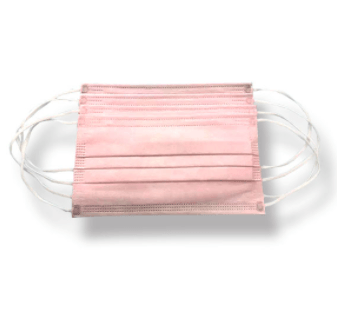Masks are worn on the nose and mouth to filter the air entering the nose and mouth to prevent harmful gases, odors, droplets and other sanitary products from entering the nose and mouth of the wearer. Therefore, an important parameter that determines the protective performance of a mask is the filtering efficiency of the mask.
According to current standards, the filtration efficiency of masks is divided into bacterial filtration efficiency (BFE) and particulate filtration efficiency (PFE). The particulate matter filtration efficiency can be divided into non-oily particulate matter filtration efficiency (also known as "salt media filtration efficiency") and oily particulate matter filtration efficiency.
Common non-oily particles such as coal dust, cement dust, acid mist, welding fumes, microorganisms, etc.;
Common oily particles such as: oil mist, oil fume, coke oven smoke, etc.
It can be seen that, for the masks for epidemic prevention and control, the standards we pay attention to are the filtration efficiency of non-oily particulate matter and the filtration efficiency of bacteria.
The filtration efficiency of non-oily particles refers to the percentage of the mask material to filter non-oily particles. Through the filter layer, the mask has the function of blocking the penetration of non-oily particles. In our daily life, some smaller particles can enter the alveoli and have an impact on human health. Therefore, the filtration efficiency of non-oily particles plays an important role in human safety protection. In the detection method of this indicator (GB/T 32610-2016 and YY 0469-2011), sodium chloride aerosol of a certain particle size is tested as a simulation medium to reflect the filtration efficiency of non-oily particles.

Bacterial filtration efficiency refers to the percentage of the mask material that filters out the suspended particles containing bacteria. Through the filter layer, the mask has the function of blocking the penetration of bacteria. In the detection method of this indicator (YY 0469-2011), the prepared bacterial aerosol is tested as a simulated medium to reflect the bacterial filtration efficiency.
Disposable medical masks and medical surgical masks are mostly used to block droplets of bacteria exhaled or sprayed from the wearer’s nose and mouth to protect the environment and the surrounding population. The most typical application is to allow people who may have respiratory infections or diagnosed patients (such as Tuberculosis, flu, etc.) wearing disposable medical masks can help reduce the pollution of the environment and infect others by the droplets of pathogenic bacteria or viruses exhaled by patients; and doctors must wear medical surgical masks during surgical operations, so that Surgical wounds will not be infected by the bacteria-carrying droplets expelled by the doctor's words and breathing, so the doctor does this to protect the patient.
(To be continued)